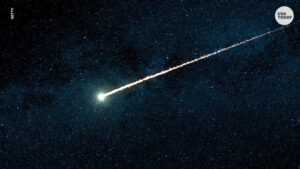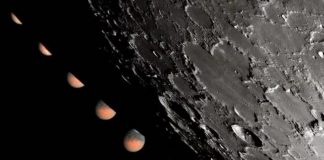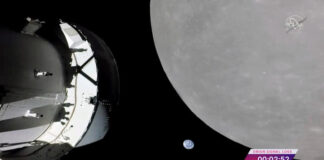OCTOBER 20, 2022

Heads ups! Orionid meteor shower offers one of fall’s fastest and brightest lights shows.
One of fall’s top astronomical spectacles will appear in the night sky this week: the peak of the Orionid meteor shower early Friday.
“The Orionids are popular among stargazers because all of its individual shooting stars are fragments of the most famous comet of all time, Halley’s comet,” Slooh astronomer Bob Berman said.
The Orionids are active each year from about Oct. 2 to Nov. 7. This meteor shower is known for its brightness and speed – each meteor can streak up to 148,000 mph.
Under a dark sky with no moon, the Orionids should produce a maximum of about 10 to 20 meteors an hour, according to EarthSky.org. They occasionally leave persistent trains. The Orionids also sometimes produce bright fireballs, EarthSky.org reports.
Why are they called the Orionids?
The Orionids get their name because they seem to come from the constellation Orion the Hunter, though the meteors usually can be seen over much of the night sky.
Specifically, the Orionids radiate from a point near the raised club of Orion. “The bright star near the radiant point is ruddy, somber Betelgeuse,” EarthSky said.
A waning crescent moon should not interfere with the meteor shower when it peaks Friday.
How are the Orionids related to Halley’s comet?
As Halley’s comet moves through space, it leaves debris in its wake that strikes Earth’s atmosphere most fully about Oct. 20-22 each year. Although the comet itself is nowhere near Earth, we’re now intersecting the comet’s orbit.
The actual comet can be seen only every 75 years or so – the next sighting is in 2062 – but the meteor shower is viewable every year around this time.
The American Meteor Society said that in exceptional years, such as 2006-2009, the peak rates were on par with the Perseids at 50-75 mph. But recent displays have produced low to average displays.
Here’s how to watch the meteor shower
To see the meteors, look to the east and southeast sky late Thursday and dawn Friday. Find a place away from lights so your eyes can adapt to the darkness.
Give your eyes 30 to 45 minutes to adapt and take in as much of the sky as possible by lying down flat on your back, Space,com says. Meteors can appear anywhere in the sky, and the more sky you see, the better your chance is to spot a shower.
The first known Orionid shower was recorded in China in the year 288 when “stars fell like rain,” Sky and Telescope reported.
Courtesy/Source: This article originally appeared on USA TODAY

































































































